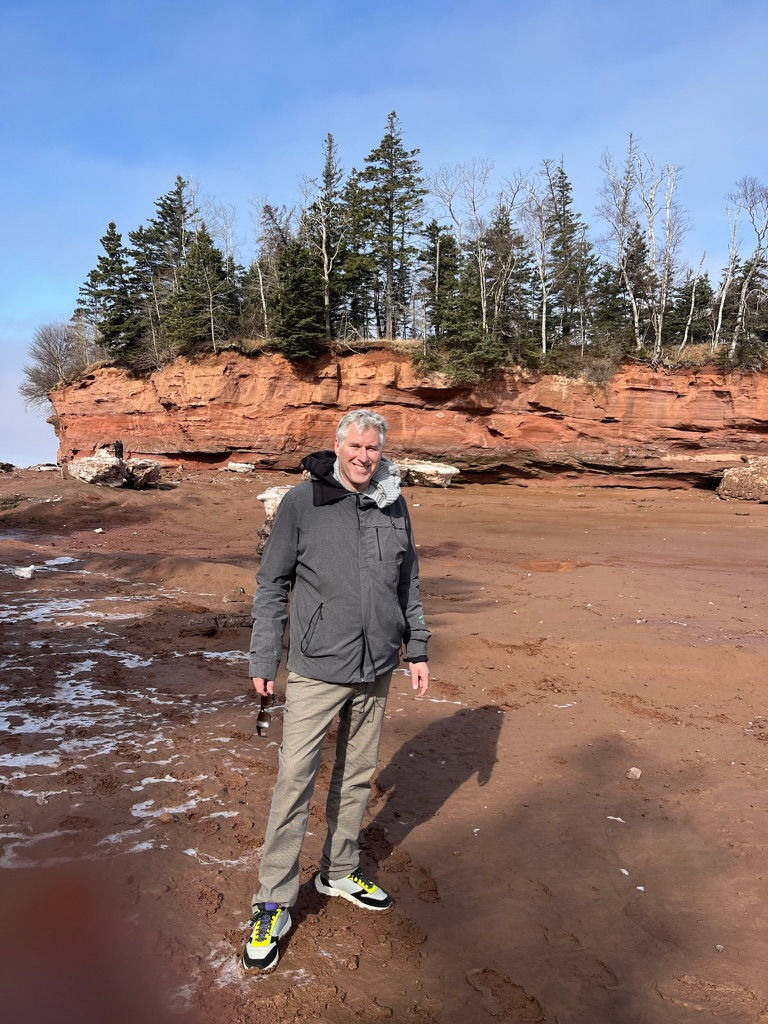Chasing the tides: a journey to the Bay of Fundy’s tidal energy frontier
- Peter Scheijgrond

- Mar 19
- 3 min read
Updated: May 5
Earlier this spring, I finally made the journey to Nova Scotia to see what tidal energy really looks like. Driving along the coast, the landscape constantly shifts with the tides. One moment, tidal rivers running deep inland are reduced to muddy sediment beds; the next, they’re filled to the top with rushing seawater. The tidal range reaches up to 16 meters in some places—the scale is almost hard to grasp. But more than the scenery, it was the people I met that really made the trip special.

Meeting the with tidal experts
This wasn’t just a sightseeing tour. It was a chance to connect with some of the people that have been developing tidal stream energy for decades. And I was incredibly grateful for the warm welcome. I met many of these Canadian researchers and engineers at conferences around the world, notablably at the PAMEC conferences held in Costa Rica, Colombia, but this time, they invited me into their world. Special thanks to Dana Morin, Craig Chandler, and Dan Hasselman from FORCE (Fundy Ocean Research Center for Energy), who made time in their schedules to show me around.
At Acadia University, I had conversations with Richard Karsten and Anna Redden, who’ve been closely studying how tidal energy can be deployed safely, with careful attention to local marine life—from salmon to white sharks.
Key tidal energy sites I visited
We visited iconic sites like:
✅ The Annapolis Tidal Power Station— a pioneering project, that I studied at University
✅ FORCE, Canada’s leading tidal test centre near Parrsboro, where turbines are tested in the most challenging conditions in flows up to 5 m/s
✅ Grand Passage, where Sustainable Marine Energy operated from 2019 to 2023
✅ Petit Passage, where Nova Innovation plans to install 15 tidal turbines of 100 kWp each
✅ Digby Gut, a site once explored by Dutch firm Tocardo for tidal energy development

What’s at stake: why tidal energy matters
And here’s what’s at stake: Nova Scotia needs clean, reliable energy. As the province works toward eliminating coal by 2030 and integrating more renewable energy than ever before, a new organization, the Nova Scotia Independent Energy System Operator (NSIESO), has been created to lead this ambitious shift. However, solar power is limited by latitude and climate, and offshore wind development has been slow to get going on the Atlantic coast. But tides? They are the most predictable form of renewable energy we have; as predictable as the position of the moon. That reliability could play a key role in energy security, not just for Nova Scotia, but for coastal regions around the world.
What’s next for tidal energy in Nova Scotia?
The province is preparing to launch a Request for Proposals (RFP) for new testing at FORCE. That means more projects, more innovation, and more potential to scale this technology.
🎥 I’ve made a short 3-minute video of my trip capturing some of these highlights—have a look and let me know what you think.
Coming full circle I’ve always had a wish to visit Nova Scotia. My first connection to the region began with a school thesis on the Highland Clearances—a tragic chapter of Scottish history that led to the displacement of many Highlanders, some of whom found a new home here. That initial curiosity deepened during my M.Phil research in Glasgow, where I pored over reports on the Bay of Fundy’s tidal energy potential. Later, in my professional life, I helped Bluewater Energy Services pursue funding to demonstrate their BlueTEC floating tidal platform at FORCE.
To finally stand on the sea bed at low tide, to meet the people leading this field, and to witness the power of the Bay of Fundy firsthand—it felt like the completion of a long journey. A full-circle moment, yes—but also a new beginning.










Comments